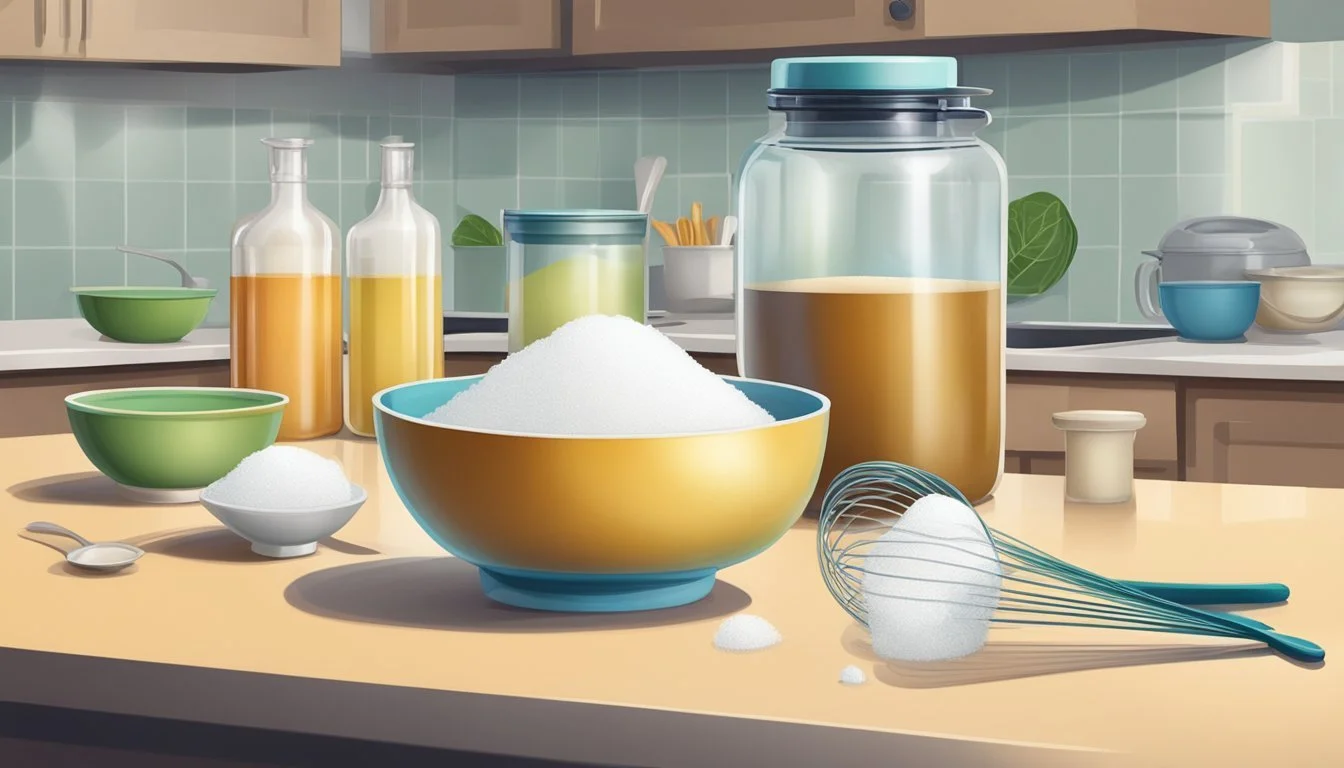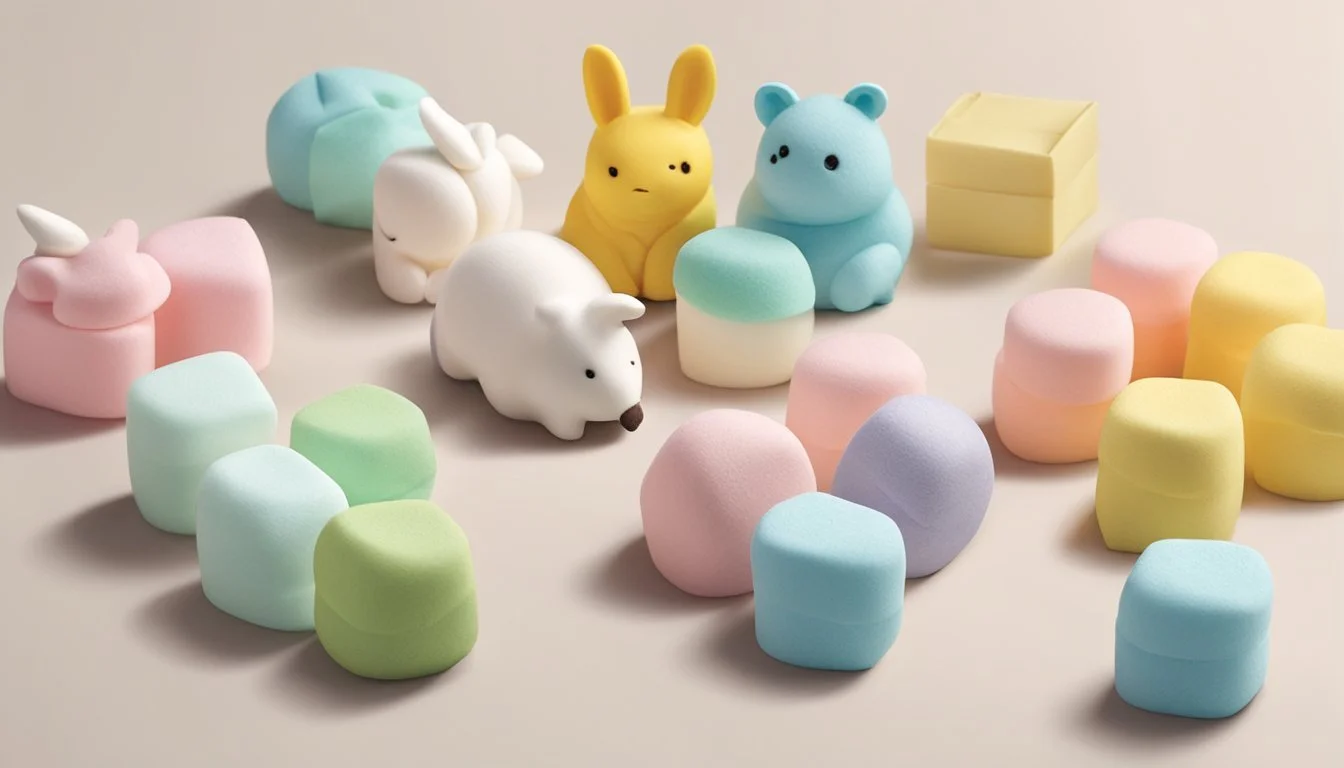Animal-Based Marshmallows: Understanding Ingredients and Alternatives
Marshmallows have been a beloved treat for centuries, delighting palates with their fluffy texture and sweet flavor. Traditional marshmallows are made using gelatin, an animal-derived product that provides the signature chewy texture. To bloom the gelatin, pour cold water into a bowl, sprinkle the gelatin, mix well, and set aside. In a small pan, combine maple syrup, sea salt, and water to create the marshmallow base.
For those who enjoy the classic marshmallow experience, animal-based options offer a time-honored recipe that has been refined over generations. Using animal-based gelatin, these marshmallows achieve an unmatched texture and consistency, making them perfect for s'mores, hot cocoa, or just as a soft snack.
With various recipes available, customizing the sweetness level and flavor of animal-based marshmallows has never been easier. Whether it’s using honey or maple syrup as a sweetener, these marshmallows can be tailored to personal preferences while maintaining their traditional charm.
Understanding Marshmallows
Marshmallows are a fascinating confection made from a distinct blend of ingredients that work synergistically to create their unique texture and flavor. Key elements include gelatin, sugar, and water, each playing a crucial role in the final product.
History of Marshmallows
Marshmallows date back to ancient Egypt, where they were made from the sap of the mallow plant mixed with honey. Initially, marshmallows were a delicacy reserved for royalty and the gods.
By the 19th century, the recipe evolved. French confectioners introduced the use of egg whites or gelatin to replace the mallow root, making the treat more accessible and easier to produce. Modern marshmallows are largely based on this 19th-century innovation, relying heavily on gelatin for structure.
Animal-Based Gelatin in Marshmallows
Gelatin is a crucial protein derived from animal collagen, typically sourced from cattle or pigs. In marshmallows, gelatin acts as a stabilizer and thickening agent.
When mixed with water and sugar, gelatin forms a gel-like structure. This creates the spongy texture that marshmallows are known for. The process usually involves blooming the gelatin in water, heating it with sugar and syrup, and then whipping it to incorporate air. This reaction between gelatin, sugar, and water is essential for achieving the perfect marshmallow consistency.
The Science of Marshmallows
Understanding the fundamental components of marshmallows can illuminate why they possess their unique texture and structure. This section examines the critical roles of gelatin and the aeration process in creating this popular treat.
Role of Gelatin in Texture
Gelatin is pivotal in marshmallows, primarily composed of collagen derived from animal connective tissues. When dissolved in warm water, gelatin forms a gel-like structure that cools into a stable matrix.
This matrix traps and suspends air bubbles, providing marshmallows with their distinctive spongy texture. Without gelatin, the structure would be much softer and less cohesive, affecting the overall experience of the treat. Gelatin not only contributes to mouthfeel but also enhances the longevity of marshmallows, ensuring they remain pliable yet firm over time.
Aeration Process
Aeration is the process of incorporating air into the marshmallow mixture, which involves whipping a sugar syrup with egg whites or sometimes aquafaba. When the mixture reaches stiff peaks, it indicates that sufficient air has been trapped, forming a stable foam.
Sugar syrup is crucial as it sets the structure once whipped. The temperature must be precise to ensure proteins in the egg whites or whipped aquafaba coagulate appropriately. Once aerated, the mixture is cooled and set in an airtight container, preserving its texture and preventing moisture loss.
This combination of ingredients and techniques results in the airy, light quality that characterizes marshmallows.
Alternative Ingredients for Vegan Marshmallows
Vegan marshmallows require substitutes for traditional ingredients like gelatin and animal-derived sweeteners. Plant-based gelling agents and protein substitutes often take their place, and natural sweeteners provide the necessary flavor and texture.
Plant-Based Gelling Agents
The main challenge in vegan marshmallow production is replacing gelatin, which is derived from animal collagen. Two popular plant-based alternatives are agar-agar and carrageenan, both derived from seaweed. Agar-agar creates a firm texture similar to gelatin. Carrageenan, particularly the kappa variety, provides gelling properties without animal products.
Additionally, vegetable gums such as guar gum or xanthan gum are used. These gums help stabilize the marshmallow mixture and create a desirable chewy texture. They also enhance the shelf-life of the product by preventing crystallization and moisture loss.
Protein Substitutes
Marshmallows typically rely on egg whites for their airy consistency. In vegan versions, aquafaba (the liquid from cooked chickpeas) is a favored substitute. It whips to a stiff peak and assists in creating a light, fluffy texture in marshmallows.
Soy protein isolate or pea protein can also serve this purpose. These proteins help to stabilize the foam structure and preserve the spongy quality. They blend well with plant-based gelling agents and integrate seamlessly into the marshmallow mixture.
Natural Sweeteners
Traditional marshmallows use refined sugar and corn syrup, but vegan alternatives often incorporate natural sweeteners. Ingredients like maple syrup, agave nectar, or brown rice syrup replace conventional sugar. These not only add sweetness but also assist in the caramelization and binding process.
For a low-glycemic option, some brands use monk fruit extract or erythritol. These sweeteners maintain the required sweetness without impacting blood sugar levels. Additionally, they help create a soft texture and avoid the use of synthetic additives.
Making Homemade Marshmallows
Creating your own marshmallows at home allows for customization and control over ingredients, perfect for those with dietary restrictions or specific taste preferences.
Tools and Techniques
To start, equip your kitchen with the right tools. A stand mixer with a whisk attachment is crucial to whip the mixture to the correct texture. A candy thermometer ensures precise temperature control, and parchment paper prevents sticking. For smoother handling, lightly oil your utensils.
Bloating the gelatin in cold water—allowing it to absorb moisture and expand—is a key step. Cooking sugar syrup to the right consistency requires a steady hand and attention to detail. Use precise measurements for ingredients like granulated sugar, corn syrup, and vanilla extract.
Make your life easier by ordering stand mixer, candy thermometer, and parchment paper, online; it's just a few clicks away!
Classic Marshmallow Recipes
Traditional recipes for marshmallows usually involve gelatin, which provides structure and chewiness. Start by blooming gelatin in cold water. Simultaneously, heat a mixture of granulated sugar, corn syrup, and water until it reaches 240°F (115°C).
Combine the bloomed gelatin with the hot syrup in the stand mixer. Whip on high until the mixture increases in volume and becomes fluffy, then blend in vanilla extract. Pour into a prepared pan lined with oiled parchment paper. Once set, dust with powdered sugar and cut into pieces using kitchen shears.
Vegan Marshmallow Variations
For those avoiding animal products, vegan marshmallows are a great alternative. Instead of gelatin, use agar-agar or carrageenan, both plant-based gelling agents. Bloom the vegan gelling agent just as you would gelatin.
In a saucepan, combine sugar, corn syrup, and water, cooking until it reaches the right temperature. Blend the hot mixture with the bloomed gelling agent in a stand mixer. For flavor and color, add vanilla extract and food coloring as desired. When the mixture is fluffy, pour it into a pan, let it set, and cut into shapes.
By following these methods and variations, anyone can create personalized, homemade marshmallows that cater to different tastes and dietary needs.
Creative Uses and Pairings
Animal-shaped marshmallows can be an exciting addition to classic treats, creative desserts, and beverage enhancements. Whether customizing traditional recipes or thinking outside the box, these marshmallows offer a playful twist to familiar favorites.
Classic S'mores and Variations
S'mores are a campfire staple best known for their simple yet delightful combination of graham crackers, chocolate, and toasted marshmallows. Using animal-shaped marshmallows adds a whimsical touch to this classic treat. For a twist, consider vegan s'mores with vegan chocolate and plant-based graham crackers, offering a cruelty-free variation with the same melt-in-your-mouth experience.
Innovative variations can include adding peppermint extract to the chocolate for an invigorating flavor, or combining different types of chocolate like white, milk, and dark to create layers of taste. The colorful animal shapes make these variations visually appealing, perfect for family gatherings and outdoor adventures.
Marshmallow Desserts and Treats
Animal-shaped marshmallows can enhance a range of desserts. Rice Krispie treats take on a new level of fun when mixed with these playful shapes. Simply swap regular marshmallows for their animal counterparts to add both texture and character.
For vegan enthusiasts, vegan rice krispie treats using vegan marshmallows and plant-based butter offer an inclusive option. These treats are as delicious as their traditional counterparts, providing a chewy, gooey delight.
Rocky road candy bars are another dessert that benefits from animal-shaped marshmallows. Combine chocolate, graham crackers, and dried fruits with these unique marshmallows for a dessert that's both tasty and visually striking.
Beverage Toppings
Hot cocoa becomes a festive experience with animal-shaped marshmallows. Floating animals atop a steaming cup of cocoa add a playful and comforting element, making it perfect for winter evenings and holiday celebrations.
Peppermint marshmallows can be particularly special when used as beverage toppings. The addition of peppermint extract in marshmallows offers a refreshing contrast to the rich chocolate of hot cocoa. Consider adding animal-shaped marshmallows to coffee, tea, or even as a garnish for cocktails to elevate the presentation and taste.
These versatile uses demonstrate how animal-shaped marshmallows can transform ordinary treats into extraordinary delights, adding fun and creativity to every snack and beverage.
Storing and Preservation
Proper storage plays a crucial role in maintaining the freshness and preventing the premature spoilage of animal-based marshmallows.
Proper Storage Methods
To keep animal-based marshmallows fresh, seal them in an airtight container. This minimizes their exposure to moisture and air, which can cause them to become sticky or hard. Using a desiccant, such as a silica gel packet, inside the container can further help by absorbing any excess moisture.
When storing marshmallows in the pantry, ensure they are kept in a cool, dry place. If refrigerating, label the container for convenience, and remember that these marshmallows should ideally be consumed within 1 week for the best texture and flavor. Freezing is another option, allowing them to last up to a year, though they should be brought to room temperature before consumption.
Shelf Life and Freshness
Animal-based marshmallows typically have a good shelf life when stored correctly. In the pantry, they can remain fresh for up to 2 to 3 months. Refrigeration can extend this time to around 6-8 months, and freezing can preserve them for about a year.
Despite these guidelines, the fat content in animal-based marshmallows can affect their longevity. Higher fat levels may cause them to spoil more quickly if not stored properly. Regularly check for any signs of spoilage, such as discoloration or unusual odors, to ensure they remain safe for consumption.
Vegan and Allergy-Friendly Alternatives
For those seeking plant-based or allergy-conscious options, vegan marshmallows provide a delicious alternative to traditional animal-based varieties. Not only do they often cater to a variety of dietary restrictions, but they also come in an array of flavors and brands.
Vegan Marshmallow Brands
A popular option in the vegan marshmallow market is Dandies Vegan Marshmallows. Known for being vegan, kosher, gluten-free, non-GMO, and free from artificial flavors and colors, Dandies offer classic, mini, and flavored varieties such as maple and pumpkin.
Freedom Mallows is another reputable brand, touted as free from 14 common allergens, making them suitable for vegan, kosher, and halal diets. This brand has been refined over many years to meet high standards and is widely available in multiple stores in the UK.
Max Sweets offers a healthier twist with their Max Mallow options. These marshmallows use carrageen and omit all sugars, including sugar alcohols, making them a unique choice for the health-conscious individual. Their flavors include Classic Vanilla, Burnt Caramel, and Huckleberry.
Homemade Vegetarian Options
For those who prefer a hands-on approach, making vegetarian marshmallows at home can be a fun and rewarding experience. A basic vegetarian marshmallow recipe typically replaces gelatin with agar-agar or carrageenan.
To start, mix agar-agar powder with cold water, then bring it to a boil. Combine this mixture with hot sugar syrup until it forms a thick, sticky consistency. Once set, these marshmallows can be cut into desired shapes.
These homemade marshmallows can be customized with various flavors and colors, ensuring you can enjoy a treat that meets your dietary needs and personal tastes.
Ethical and Dietary Considerations
Animal-based marshmallows raise concerns among individuals adhering to specific ethical and dietary principles, including vegans and those following kosher and halal dietary laws.
The Vegan Lifestyle
Vegans avoid animal-based marshmallows due to ingredients like gelatin, derived from animal collagen. To align with vegan values, alternatives such as agar or other plant-based gelling agents are used. Vegan marshmallows also exclude ingredients processed with animal products, such as bone-char filtered cane sugar. Vegan-friendly options appeal not only to ethical considerations but also to health-conscious individuals seeking to avoid artificial additives.
Kosher and Halal Options
For kosher and halal diets, standard gelatin poses a significant issue. Kosher gelatin must come from kosher-certified animals or fish, while halal gelatin must be derived from animals slaughtered according to Islamic law. Some marshmallows use agar and egg replacer as alternatives to meet these dietary requirements. Egg white alternatives or fish gelatin serve as additional solutions for creating marshmallows that conform to both kosher and halal standards. These versions offer inclusivity without compromising religious principles.












